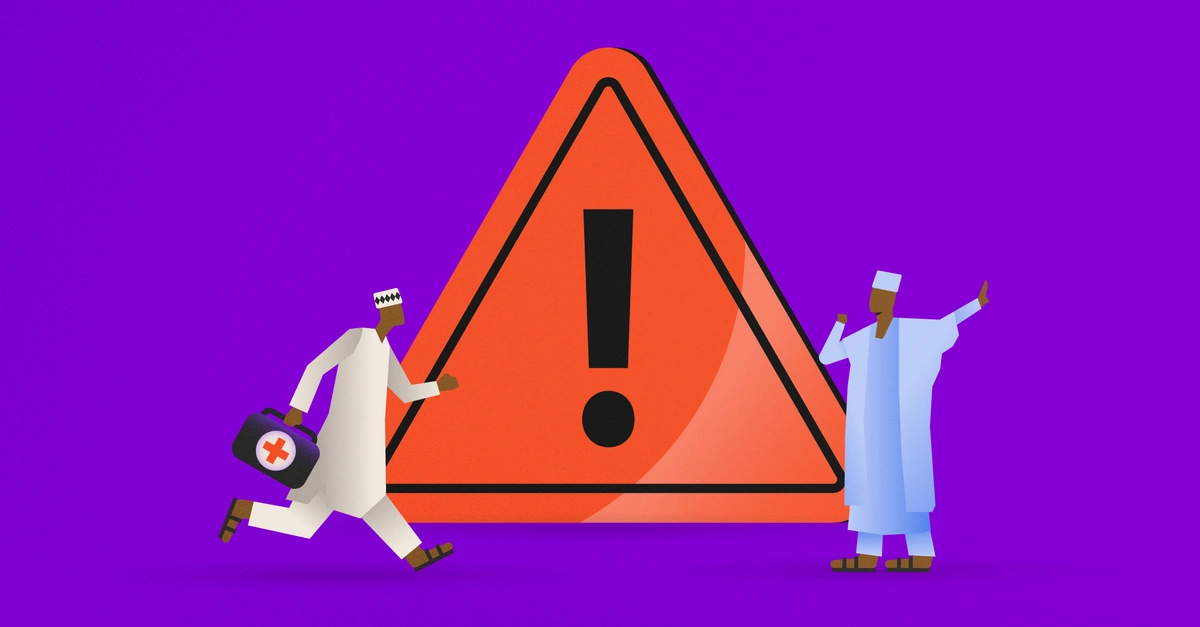
Vaccinating citizens in security‑compromised areas might seem impossible, but with innovative thinking, children’s lives can be saved.
Last month in Zamfara, Nigeria, a vaccinator prepared to visit a remote village, where most children had never received a single vaccine. Local contacts confirmed it was safe. But the next morning, the village head called with a warning. Bandits were expected in the village that day. The trip was postponed, and the vaccinator returned only when it was safe.
Stories like this happen regularly in Zamfara. Bringing vaccines to these children takes far more than medical supplies. It requires three things: careful coordination, raising demand, and rapid execution.
Careful Coordination
Insecurity in Zamfara is highly unpredictable. A community may be safe in the morning and unsafe by evening. For vaccinators, entering a village without the latest information could put lives at risk.
It’s important to have deep collaboration with village heads and local informants. These community leaders act as the eyes and ears for vaccinators, offering real-time updates on which areas are accessible and which are not.
In some places, the village head might tell us, “you can come between 12 p.m. and 4 p.m.—after that it’s unsafe.” This information ensures that vaccinator visits can be planned safely.
Consistent communication has helped improve outreach in Zamfara. In just a couple of months, some areas that previously had no access saw almost 15% of communities reached, and over 13,000 children vaccinated in total. Innovation doesn’t always come in the form of smart tech. Sometimes, it means getting the basics right.
Raising Demand
Physical access is only part of the challenge. In many communities, caregivers are hesitant to bring children for vaccination. Some expect incentives like food or cash, while others are influenced by misconceptions or distrust.
By working closely with village heads and mobilisers, they educate caregivers about the life-saving benefits of vaccines, emphasising that immunisation is a responsibility, rather than a transaction or something to fear.
The approach is showing real impact. Even in high-risk areas, caregivers are starting to bring children voluntarily, without waiting for incentives. This mindset shift is critical for long-term sustainability, ensuring that vaccination campaigns remain effective even if financial incentives are reduced or external partners change.
Rapid Execution
When vaccination day arrives, speed and efficiency are essential. Outreach sessions in security-compromised areas are designed to minimise exposure:
-
Caregivers are mobilised ahead of time, often to the village head’s palace or another safe central point.
-
If it isn’t possible to mobilise caregivers and their children in advance, mobilisation happens in real time, with village heads sending runners to gather families as the vaccinators arrive.
-
Caregivers arrive at the place of vaccination one at a time with their children, to avoid drawing attention to themselves.
-
Vaccinators work quickly, often completing a session in 20–30 minutes, to avoid encountering bandits.
This approach allows vaccinators to deliver maximum impact in minimum time, then exit safely before the security situation changes.
Reaching the Hardest-To-Reach
Through local partnerships, raising demand, and speedy delivery, it’s possible to deliver for citizens in security-compromised settings. Communities once considered unreachable in Zamfara, Nigeria, are now receiving life-saving vaccines. Being such a challenging region, there is no reason why this work cannot translate to other countries and regions facing similar issues.
To learn more about how keeping updated in real time with what's happening on the ground is crucial to improving healthcare for citizens, read our latest piece about 'Too Much Data, Too Little Insight'.


